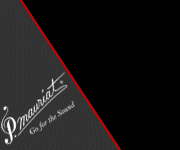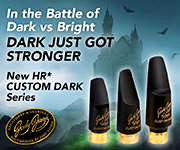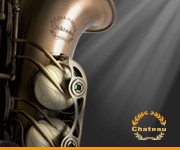 Forgot Username? Forgot Password?
Forgot Username? Forgot Password?
 C.G. CONN's History
C.G. CONN's History
C. G. CONN - FOUNDING FATHER OF ELKHART'S MUSICAL INSTRUMENT MANUFACTURING INDUSTRY
Charles Gerard Conn was born in Phelps, Ontario County, New York on 29 January 1844, son of Charles J. and Sarah (Benjamin) Conn. In 1850 the family removed from New York to Three Rivers, Michigan, and then in the following year they came to Elkhart. Charles J. Conn had been a farmer up till then, but in his life in Indiana he became a school teacher and held the position of superintendent of Elkhart public schools for twenty-five years. He was also superintendent of schools in LaPorte for some time but retired from teaching because of a growing hearing loss. He spent the rest of his life as a Daguerrean photographer.
Little is known about C. G. Corn's earliest years, but we can safely assume that at an early age he took up cornet-playing. Despite his parents' protests, at the age of seventeen he enlisted on 18 May 1861 and became a private the following 14 June in Company B of the 15th Indiana Infantry, and shortly afterwards was assigned to a regimental band. When his enlistment expired he returned to Elkhart, but soon afterward on 12 December 1863 he re-enlisted at Niles, Michigan in Company G of the 1st Michigan Sharpshooters. At the age of nineteen on 8 August 1863 he was elevated to the rank of Captain. His second enlistment was more eventful. During the assault on Petersburg 30 July 1864 Conn was wounded and taken prisoner. In spite of two imaginative and valiant attempts to escape, he was recaptured and spent the rest of the war in captivity. He was honorably discharged 28 July 1865.
In 1884 Conn organized the 1st regiment of artillery in the Indiana Legion and became its first colonel, a military title which stayed with him throughout the remainder of his life. He was also the first commander of the Elkhart Commandery, Knights Templar. Colonel Conn also served as lieutenant colonel of the 2nd regiment of uniform rank, Knights of Pythias, and was re-elected many times as commander of the local G. A. R. post. In 1926 Colonel Conn was bestowed the Congressional Medal of Honor.
After the war, Conn returned to Elkhart and established a grocery and baking business. He also played cornet in the local community band. Conn's entrance into the musical instrument manufacturing business was the result of a split lip. There are three existing stories of how this occurred, but the popularly accepted version is that Del Crampton slugged him in the mouth outside a saloon where both of than had been drinking. Corm's upper lip was so severely lacerated and it pained him so to play his horn that he thought his playing days were over. In addition to running his store Conn also made rubber stamps and re-plated silverware He decided to try adhering rubber stamp material to the rim of a mouthpiece which he hoped would conform to his lips. After he showed his friends his idea, he saw that there was tremendous demand for his invention. Conn then began to contemplate manufacturing his new mouthpiece. He needed a rim with a groove which the rubber cement would adhere to more easily. It was in 1873 when Conn converted a discarded sewing machine frame into a simple lathe and started to turn out his mouthpieces. Soon he was in full production.
It was about this time that Conn net Eugene Dupont, a Frenchman and a recent transplant to Elkhart. Dupont had built cornets while living in France. They struck up a friendship, a short-lived one, but long enough to put Conn into the horn making business. Conn's rubber-rimmed mouthpiece was patented in 1875, and around that time Dupont designed Conn's first cornet called the Four-In-One. The instrument was provided with four interchangeable crooks as mouthpipes which allowed the instrument to be played in the keys of A, Bb, C, and Eb. By 1877 Conn's business outgrew the back of the grocery store, and he purchased an idle factory building and began to make band instruments of all kinds. Conn succeeded to attract skilled craftsmen from Europe to his factory, and in this manner he expanded his operation so that by 1905 Conn had the world's largest musical instrument factory producing a full line of wind instruments, strings, percussion, a portable organ and gramophone bells.
Conn's first factory was destroyed by fire on his thirty-ninth birthday in 1883. Soon afterwards he began to erect a new factory on the corner of Jackson Boulevard and Elkhart Avenue. In 1886 rumors circulated that
Conn wanted to move his business to Massachusetts. Conn was induced to stay after the public raised a large sun of money by popular subscription and gave it to him. In the following year Conn purchased Isaac Fiske's brass instrument manufactory in Worcester, Massachusetts. Fiske's operation was considered to be the best in its time, and Conn operated it as a branch factory. Thus Conn kept his business in Elkhart and yet achieved his objectives.
The second factory burned on 22 May 1910, a loss variously estimated between $100,000 and $500,000. Conn was en route from California to Elkhart When his factory burned, and upon arriving home he was met with a public demonstration, a way of showing popular sympathy. Conn then announced his intentions to build a third factory on the corner of East Beardsley and Conn Avenues. Construction began 15 August 1910, and by the following 12 December it was fully operational.
Colonel Conn was a colorful personality of the showbiz sort. He believed that he could do anything. His career grew far beyond the confines of horn making. In 1880 Conn was elected mayor of Elkhart on the Democratic ticket. He was re-elected in 1882 but did not finish the term. In 1888 ten days before the general election Conn was drafted as an emergency candidate for the Indiana House of Representatives by the Democrats, an election be succeeded to win. He was elected in 1892 to Congress as Representative of the 13th district of Indiana. Two years later he was re-nominated but declined to accept the nomination unless the party permitted him to make the canvass on a "reformed" platform which he announced. The party wouldn't permit it and accepted his declination. In 1908 he ran for governor of Indiana but lost. In 1910 he was a candidate for the Senate. During the last thirty years of his life Colonel Conn was an ardent advocate of temperance.
Colonel Corn also had a love affair with publishing. He founded the Elkhart Daily Truth on 15 October 1889, a newspaper which is extant under the name of the Elkhart Truth. He published the monthly Trumpet Notes which he circulated amongst his employees and dealers. He also published a scandal sheet called The Gossip which, along with the town doings, he used occasionally to attack his competitors and enemies. While a member of Congress he purchased the Washington Times. He conducted a sensational campaign against alleged vice in the city. Eventually he found himself as a defendant in a big damage suit but won the case. Sometime later he disposed of the paper.
One of Colonel Conn's disappointments was his involvement with early day electrical generating systems. In 1904 he constructed a powerhouse and provided electrical service as a competitor to the Indiana and Michigan Electric Company. They later bought Corn out at a great sacrifice to himself.
A turning point to Corn's financial affairs and public life took an important turn in April of 1911 when he and his first wife executed a trust deed for $200,000 covering all their possessions for the purpose of bonding the Corn indebtedness and securing working capital, the longest bond to mature in ten years. Conn's money problems stemmed partly from failed adventures like his entry into the utilities business described previously, and the fire and the rebuilding of his third factory must certainly have been a major contributor, but it may also have been due to a costly lawsuit he lost to his former right-hand man William J. Gronert, a suit to be described later in greater detail when Gronert's career is described. The deed included, in addition to the horn factory and what was then known as the Angledile Scale Factory and The Truth, some sixty descriptions of real estate in Elkhart and vicinity, various real estate mortgages, 125 shares of stock in the Simplex Motor Car Company of Mishawaka, Indiana, a sea-going yacht, a lake motor launch, and much valuable personal property.
In 1915 all of Colonel Conn's holdings were bought by a group of investors led by Carl D. Greenleaf of Wauseon, Ohio. During Conn's years in Washington D. C. he net Greenleaf, and through this contact Conn invested in some grain mills in Ohio which Greenleaf owned. Initially Conn held onto ownership of The Truth, but a few months after the sale of his other holdings, Conn sold The Truth to Greenleaf and to a local entrepreneur Andrew Hubble Beardsley. Greenleaf incorporated his new holdings under the name C. G. Corn, Limited, and retain the Conn trademark on his musical instruments. The sale was detrimental to Colonel Conn's marriage. They divorced, and Mrs. Conn was allowed to retain a house in Elkhart in which she lived in until her death in 1924. Colonel Conn meanwhile was allowed to keep his home in Los Angeles. He spent virtually the remainder of his life there and only returned to Elkhart once in 1926 to visit his sister. He remarried to a very young woman While in California, and she bore him a son twelve years before his death. He died in Los Angeles 5 January 1931 at the age of eighty-six after a two-week illness. His body was returned to Elkhart for burial. Once a very wealthy and influential man, he died almost penniless. His estate didn't have enough money in it to afford a grave marker, and a hat was passed around the horn factory to collect enough money to buy a stone.
Carl Greenleaf was president of Corn from 1915 to 1949. He was an astute businessman, yet he was also very sensitive to the market trends of the • industry. While president Greenleaf was noting the gradual extinction of the small town brass band, and he knew that in order for the industry to survive band programs had to be promoted in schools and colleges. He succeeded to develop a close relationship and communications between the industry and music educators. With the help of educators such as Joseph Maddy and T. P. Giddings, they helped introduce band music into the schools. Greenleaf organized the first national band contest in 1923 and helped make possible the founding of the National Music Camp at Interlochen, In 1928 he founded a Conn National School of Music which trained hundreds of school band directors. The whole industry blossomed because of his foresight, and we must credit Greenleaf for being the prime initiator of the development of the instrumental programs in our schools and communities we now enjoy.
Leland B. Greenleaf joined Conn in 1928 as an assistant engineer. He was treasurer in 1953, vice-president in 1955, president from 1960 to 1966, and chairman of the board from 1967 to 1969. He was responsible for the developments which helped keep Conn in the forefront of the industry. Through his influence the Strobotuner, the Stroboconn, audio-visual devices to measure the dynamic level of sound, the first fiberglass sousaphone, and the first electrolytically-formed one-piece seamless bell were developed.
Carl Greenleaf retired in 1950, and from that point on he served as chairman of the board until his death in 1959. Afterwards Conn lost its hold on the leadership of the industry and gradually declined. In 1971 Conn, under pressure from competition and union pressures, needed to cut their costs and began to look to greener pastures. Conn first moved its corporate office to Oak Park, Illinois, and in the following year all of Conn's manufacturing facilities were moved to North Carolina, Texas, and Mexico, save the organ operation which continued to operate in Elkhart until 1978, and the piano factory which was sold to a factory manager. The corporate offices returned to Elkhart in 1982, but the manufacturing units remained as they were.
In 1986 a European conglomerate heavily invested in off-shore oil drilling saw that it had to diversify its holdings. A number of music businesses were for sale at the time. They were Armstrong, Artley, Benge, Conn, Continental Music, and Scherl & Roth. They were all bought at once by the conglomerate which created from them United Musical Instrument and set up the new entity's corporate offices in Elkhart.




